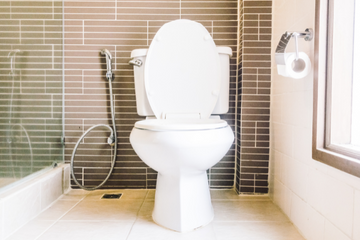In the domain of water conservation, water-saving toilets have emerged as a pivotal innovation. Yet, like all plumbing features, they aren't impervious to issues. One of the most common, and often undetected, problems is leaks. Knowing how to detect leaks in water-saving toilets can not only prevent water wastage but also save you from exorbitant water bills. This guide will walk you through the nuances of identifying and addressing leaks in these environmentally friendly fixtures.

Understanding Water-Saving Toilets
Before we delve into leak detection, its essential to understand what makes water-saving toilets distinct. These toilets are designed to use significantly less water per flush compared to traditional models. There are various types, including dual-flush toilets, which offer two flushing options to conserve water.
Water-saving toilets are celebrated for their efficiency, but they can sometimes encounter issues similar to those found in conventional toilets. Leaks, if not detected early, can negate the conservation benefits these toilets offer.
Common Causes of Leaks in Water-Saving Toilets
Identifying the root cause of a leak is crucial in effectively resolving it. Here are some common causes:
Faulty Flapper Valve
The flapper valve is responsible for sealing the tank after flushing. If its worn out or misaligned, water can leak into the bowl continuously. This is a frequent issue in both traditional and water-saving toilets.
Cracks in the Toilet Tank
Cracks, although rare in modern toilets, can occur due to manufacturing defects or physical damage. These cracks can lead to slow leaks that are hard to detect but can cause significant water loss over time.
Inefficient Fill Valve
The fill valve controls the flow of water into the tank. If its not functioning properly, it can cause the tank to fill slowly or not at all, leading to leaks.
Techniques for Detecting Leaks
Detecting leaks in water-saving toilets involves a combination of observation and testing. Here are some effective methods:
Food Coloring Test
One of the simplest ways to check for leaks is the food coloring test. Add a few drops of food coloring into the toilet tank and wait for about 30 minutes without flushing. If the color appears in the bowl, you have a leak.
Inspect the Flapper
Lift the tank lid and inspect the flapper valve. Ensure its sealing properly and is not worn out. Replacing a faulty flapper is a simple fix that can stop a leak.
Check the Water Meter
If you suspect a leak but can't find it, check your water meter. Record the reading, avoid using water for a couple of hours, and then recheck the meter. If the reading has changed, you likely have a leak somewhere in your system.
Listen for Running Water
Sometimes, the sound of running water is the easiest way to detect a leak. Stand close to the toilet and listen carefully. If you hear water running when the toilet is not in use, its a clear sign of a leak.
Preventing Future Leaks
Prevention is better than cure. Regular maintenance can help avoid leaks before they start. Here are some tips:
Regular Inspections
Perform regular checks on your toilets components, especially the flapper and fill valve. Replace parts as needed to ensure optimal functioning.
Professional Maintenance
Schedule regular maintenance with a professional plumber to ensure that your toilet remains in good condition. Professionals can spot potential issues that might not be visible to the untrained eye.
For more insights on maintaining water-efficient toilets, visit Home Water Works.
Conclusion
Understanding how to detect leaks in water-saving toilets is essential for anyone looking to optimize their home's water efficiency. By being vigilant and conducting regular checks, you can ensure your toilet functions as intended, conserving water and saving on bills. For more information on water-saving techniques, you can explore home improvement tips that enhance water efficiency.

Frequently Asked Questions
How often should I check my water-saving toilet for leaks?
Its advisable to check your toilet for leaks every few months, or if you notice an unexplained increase in your water bill.
Can a leaking toilet cause high water bills?
Yes, even a small leak can lead to significant water wastage over time, resulting in higher water bills.
Is it possible to repair a leaking toilet myself?
Many toilet leaks can be fixed with DIY methods, such as replacing a flapper or adjusting the fill valve. However, for more complex issues, consulting a professional is recommended.






